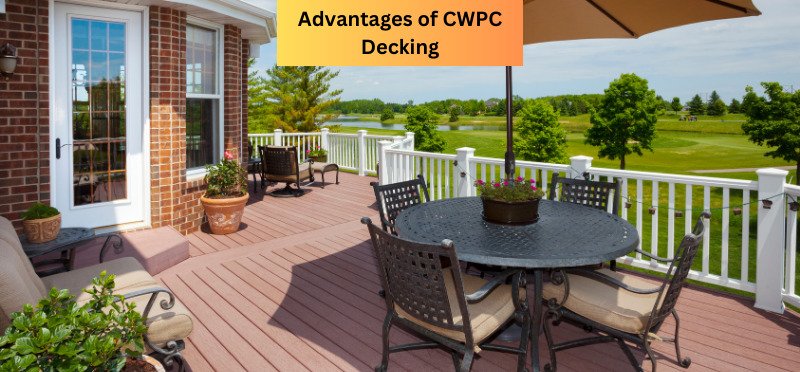CWPC decking is an eco-conscious and aesthetically pleasing alternative to conventional wooden decks. Crafted from a blend of recycled wood and plastic, this decking marvel combines durability, style, and sustainability. Suitable for various climates, CWPC decking stands as a low-maintenance, easy-to-install solution that comes in an array of colours, styles, and textures. Discover the the Advantages of CWPC Decking a sought-after choice for homeowners seeking enduring and cost-effective outdoor spaces.
Unveiling the Advantages of CWPC Decking
For those in search of a robust, eco-friendly substitute for traditional wood decking, CWPC (wood-plastic composite) decking is the ultimate answer. This material seamlessly marries the allure of wood with the resilience of plastic, rendering it ideal for outdoor living zones. Delve into the manifold benefits of tulou CWPC decking:
1. Durability & Low Maintenance:
CWPC boasts exceptional strength, resisting water damage, insects, mould, and mildew. It demands minimal maintenance – a simple clean with soap and water keeps it pristine, saving you both time and money in the long run.
2. Eco-Friendly:
Crafted from recycled materials like wood fibres and polyethene or polypropylene plastics, CWPC stands as an environmentally responsible choice. It minimizes its impact on the environment compared to traditional timber decks, which necessitate tree felling for production.
3. Versatility & Customization:
With a plethora of colours and textures to choose from, CWPC can be tailored to meet your unique design aspirations, enhancing the allure of any outdoor living area. Moreover, its slip resistance makes it suitable for wet surfaces, ensuring safety even during adverse weather conditions.
Exploring CWPC Decking Varieties
Wood Plastic Composite (WPC) decking comes in various types, offering versatility and tailored advantages. Here, we delve into the distinctions between capped and uncapped CWPC decking:
Capped WPC Decking:
This variant consists of an outer plastic layer that shields the inner core, comprising recycled wood fibres and plastic, from environmental factors like moisture and UV rays. The cap enhances durability, resisting fading over time with minimal maintenance. Capped boards are easier to clean, making them ideal for high-traffic areas like patios, decks, and walkways.

Uncapped WPC Decking:
Uncapped CWPC decking is crafted without an outer plastic layer but still features the core composition of recycled wood fibres and plastic. While it offers durability and an eco-friendly profile, it may require more maintenance compared to capped boards.
Mastering the Installation and Care of CWPC Decking
Achieving an enduring CWPC deck necessitates proper installation and maintenance. Equip yourself with the essential tools – circular saw, drill/driver, level, tape measure, utility knife, and wood screws or nails – to commence the installation process. Ensure your installation surface is flat and even to guarantee a level deck.
Laying out your CWPC boards evenly, without gaps or overlaps, is pivotal to preventing warping or other issues over time. Prioritize screws over nails, as they offer superior stability, crucial for high-traffic zones like decks. Following these steps ensures your CWPC deck remains robust and visually stunning for years.
In Conclusion
CWPC decking stands as an excellent choice for homeowners seeking to elevate their outdoor living spaces. It epitomizes low maintenance, durability, and aesthetics, effortlessly withstanding the elements while exuding timeless allure. With its numerous advantages, CWPC decking promises to infuse beauty and functionality into any outdoor haven.


